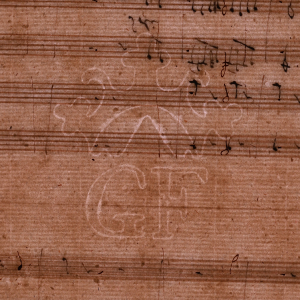Music manuscripts are produced by composers or copyists; each hand is, therefore, assigned to one (or both) of these functions.
Whenever possible, a corresponding biography will be available, including relevant information pertaining to the handwriting style or peculiar writing habits of the composer/copyist.
All composers and copyists with a recorded handwriting will be listed alphabetically (by Handwriting ID). The Handwriting ID of a composer or of a known copyist is the respective name (surname first); for example, Lagoa, Manoel Marques. The Handwriting ID of anonymous copyists will be Anon### (### being a three-digit number) and will also be listed alphabetically.
Extensive musical handwriting elements will be available as images; they will be complemented with literary handwriting elements and a page overview (at the end).
Handwriting filters:
The method for identifying (by comparison) a particular handwriting is due to Martin Eybl, the PI of the project Paper and Copyists in Viennese Opera Scores. His Copyist Identifier was, with his generous permission, adapted to suit a corpus with quite diverse characteristics. The differences can be ascertained by analysing the available filters on the Handwriting page (at the top).
These filters can be used to determine if a particular anonymous handwriting already exists in the database, or to find the name of the composer/copyist whose hand has certain specific characteristics.
- C-clef: type 1 (2 vertical lines), type 2 (3 vertical lines), other; choose none, one or more types (researchable on the Handwriting page, at the top);
- F-clef: type 1 (opening to the left), type 2 (opening to the right), type 3 (S shaped, also mirrored), other; choose none, one or more types (researchable on the Handwriting page, at the top);
- G-clef: type 1 (the main body of the clef is wholly contained within the stave), type 2 (the main body of the clef is not wholly contained within the stave); choose none, one or two types (researchable on the Handwriting page, at the top);
- Single quaver (stem down): type 1 (tail to the left, one continuous gesture), type 2 (tail to the left, two gestures), type 3 (tail to the right, one continuous gesture), type 4 (tail to the right, two gestures); choose none, one or more types (researchable on the Handwriting page, at the top);
- Any combination of 1. to 4..


